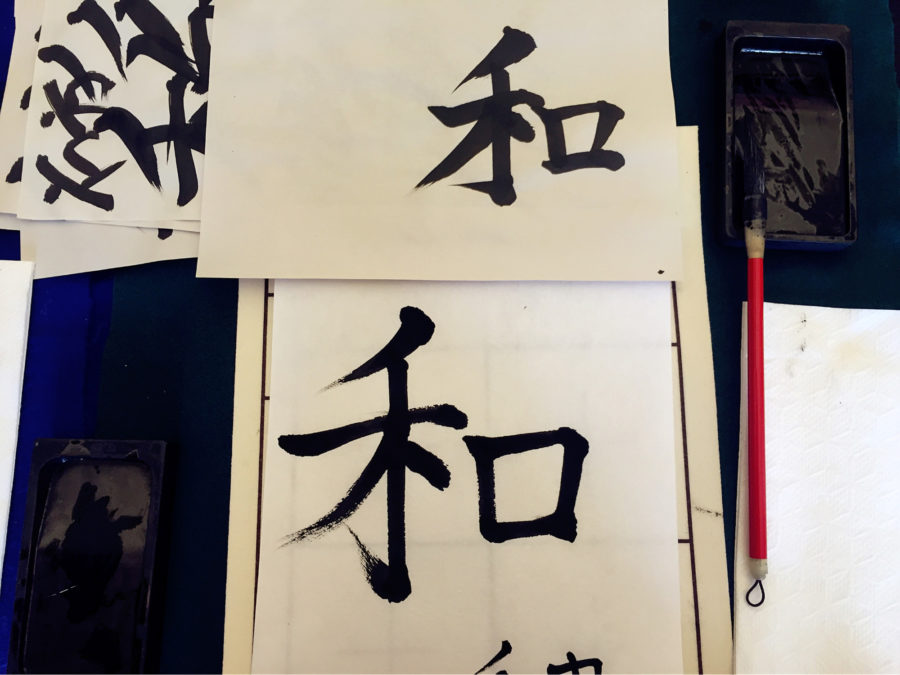UI professor explores the fantasy of calligraphy
Completed pieces of the Chinese character “He”, meaning the harmony, at the Shodo Workshop held by Japan House on Mar. 13, 2016.
March 15, 2016
Calligraphy is widely venerated in traditional as well as modern East Asian culture. China, Japan, Korea and Vietnam are countries that evolved calligraphy into civilization over a long history. In ancient Chinese culture, people who can do beautiful handwriting and calligraphy are considered prominent officials and noble lords.
On March 13, Professor Emeritus Shozo Sato held a shodo calligraphy class for beginners at Japan House. Around 15 attendees, including college students from the University, Tomonokai members and the general public, were present.
In old China, across many dynasties, calligraphy gives scholars integrity and moral courage to infuse their energy into what they write. According to Professor Sato in class, calligraphy masterpieces are powerful and expressive as it shows you what the author was thinking of when he wrote the characters.
The notion of “Qi’ is essential in professional calligraphy. Qi is a state of mind that allows the author to write vivid characters with vigor and spirituality. When calligraphy master holds a breath and prepares to start the first move, he is to gather the power from his mind and body to concentrate on the artistic ink-painting.
According to Shozo, the brush for calligraphy should be easy to control between strokes, soft enough and sufficiently dipped in ink. Every stroke that comprises of a character has to be completed with whole heart and soul by the author.
Get The Daily Illini in your inbox!
“I’m a huge fan of East Asian calligraphy. Calligraphy conveys the spiritual state; that is not the physical appearance, but the essence, connotation and extension, of a subject,” Stephanie Fang, a graduate of the University, said. “Looking at the artful works from ancient experts, I feel the energy as if I could understand his idea and thoughts.”
In Chinese and Japanese culture, the remarkable calligraphy pieces remain powerful and popular because the “Qi” generated with the painting never goes away for hundreds of years. It is said the “Qi” is sealed inside the strokes and interpreted by the substance and color.
Annie Ng, a semi-professional artist on calligraphy, talked about the future and impact of calligraphy on people’s life.
“Calligraphy is the imagination, creativity and attitude of language,” she said. “It deserves public appreciation and never goes out of fashion. I feel lucky to practice it every day as many people choose beautiful handwriting design as their career.”
Chinese calligraphy has five major script types, including seal script, clerical script, semi-cursive script, cursive script, and regular script. Script styles are used for different educational, decorative and entertaining purposes.
“It’s fascinating to note that good artists can write one single character in many different styles,” said RuiNong Fan, a senior calligraphy amateur artist, pointed out the uniqueness of different calligraphy fonts and styles. “My favorite calligraphy font is the regular script, which is considered the easiest and standardized one to understand. Regular script is so widely spread every literate knows the style in China. Writing in regular script gives me a sense of formality while not losing fun of writing elegant chinese characters.”







